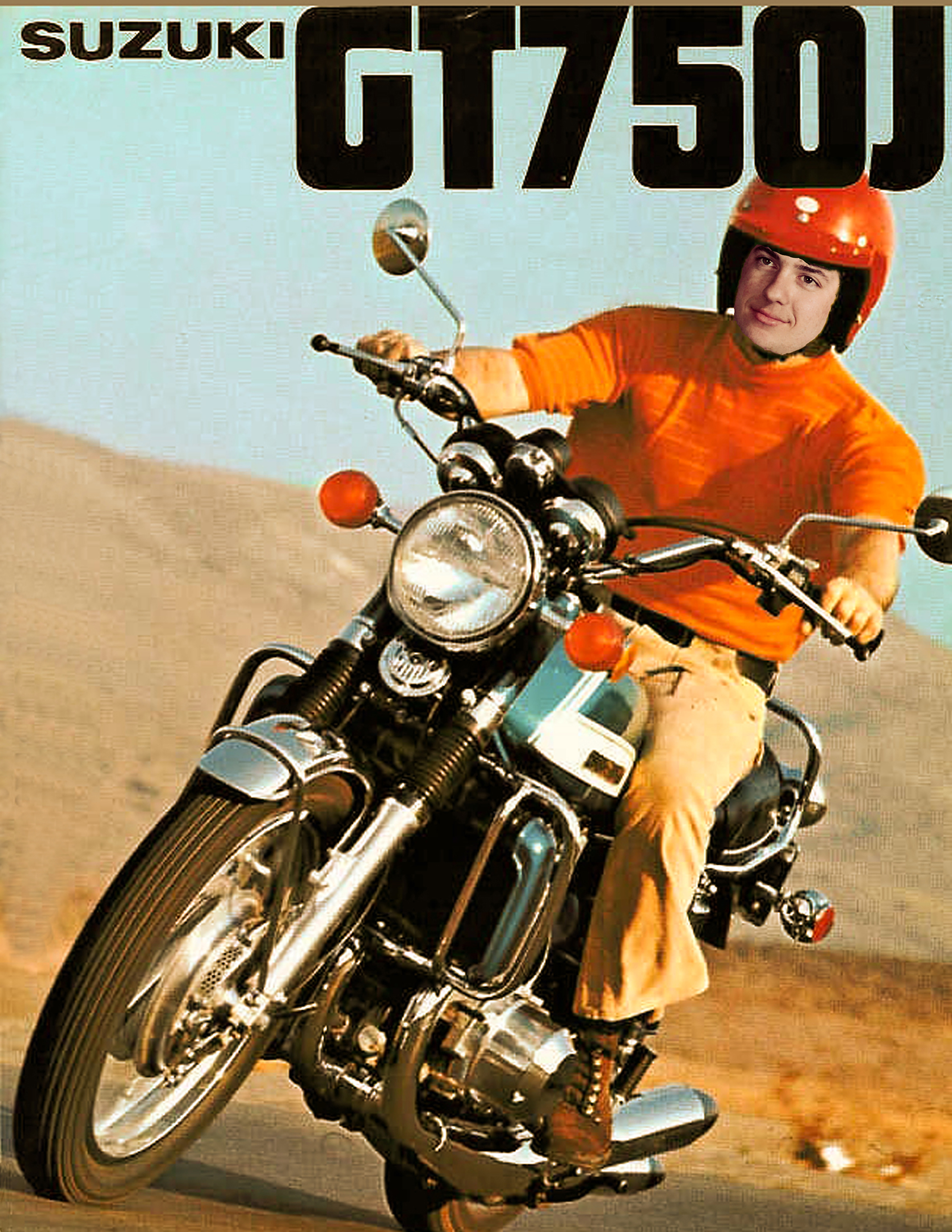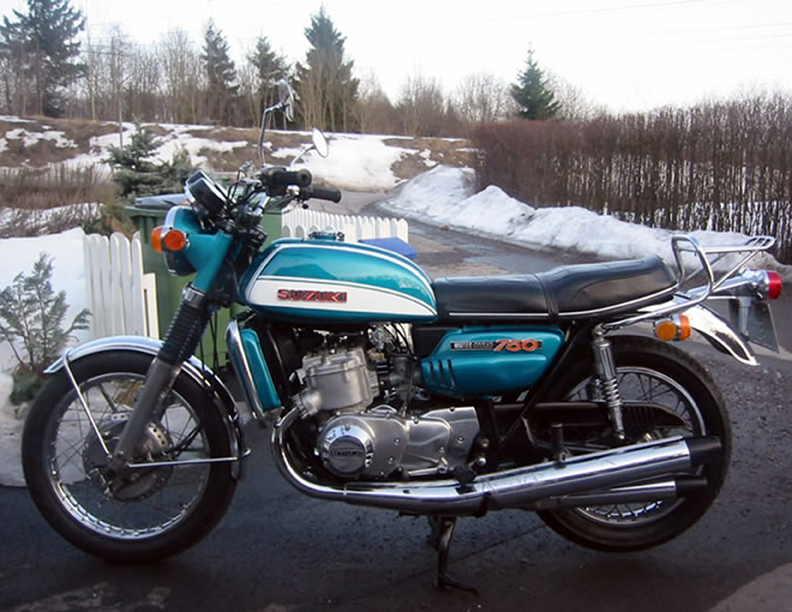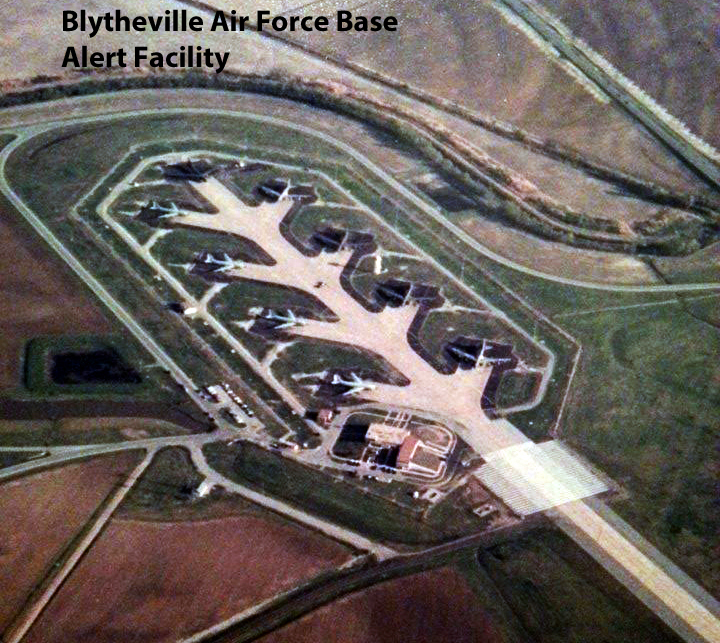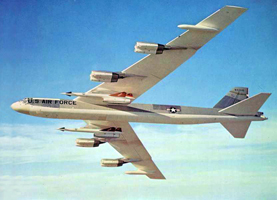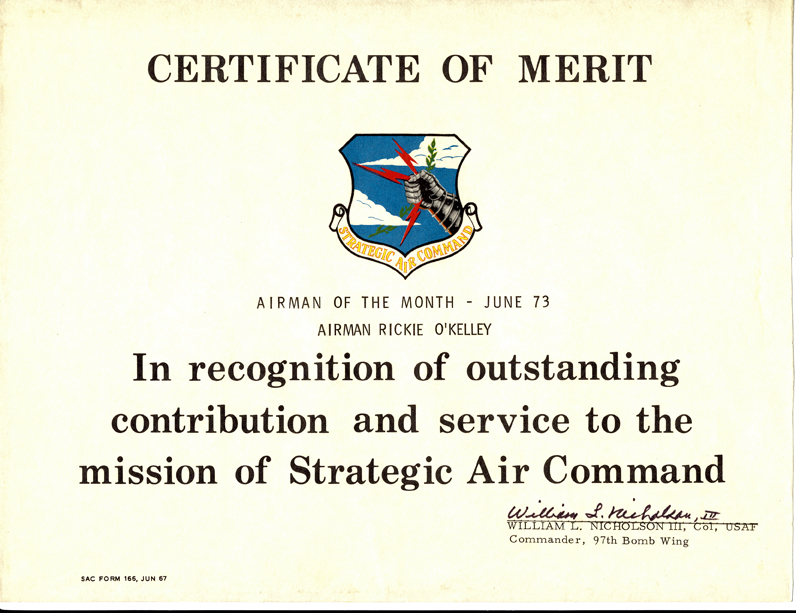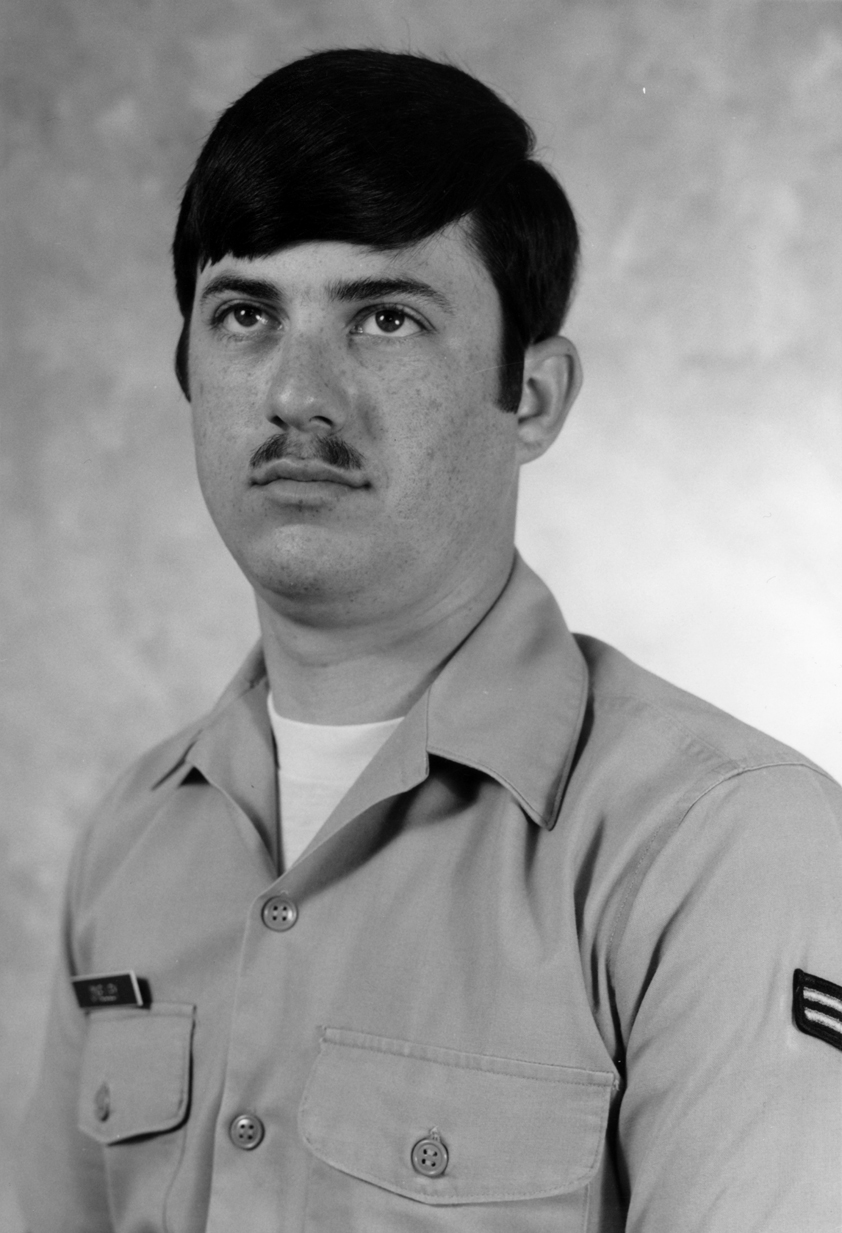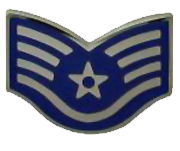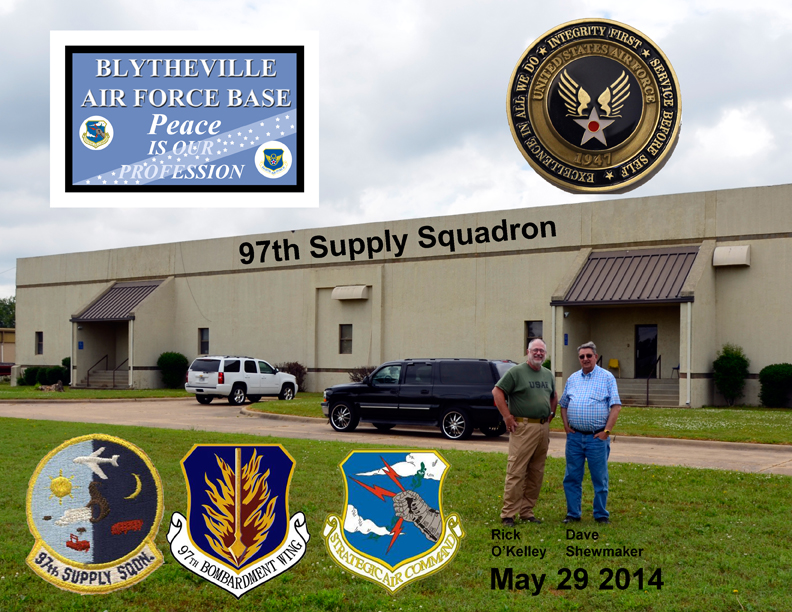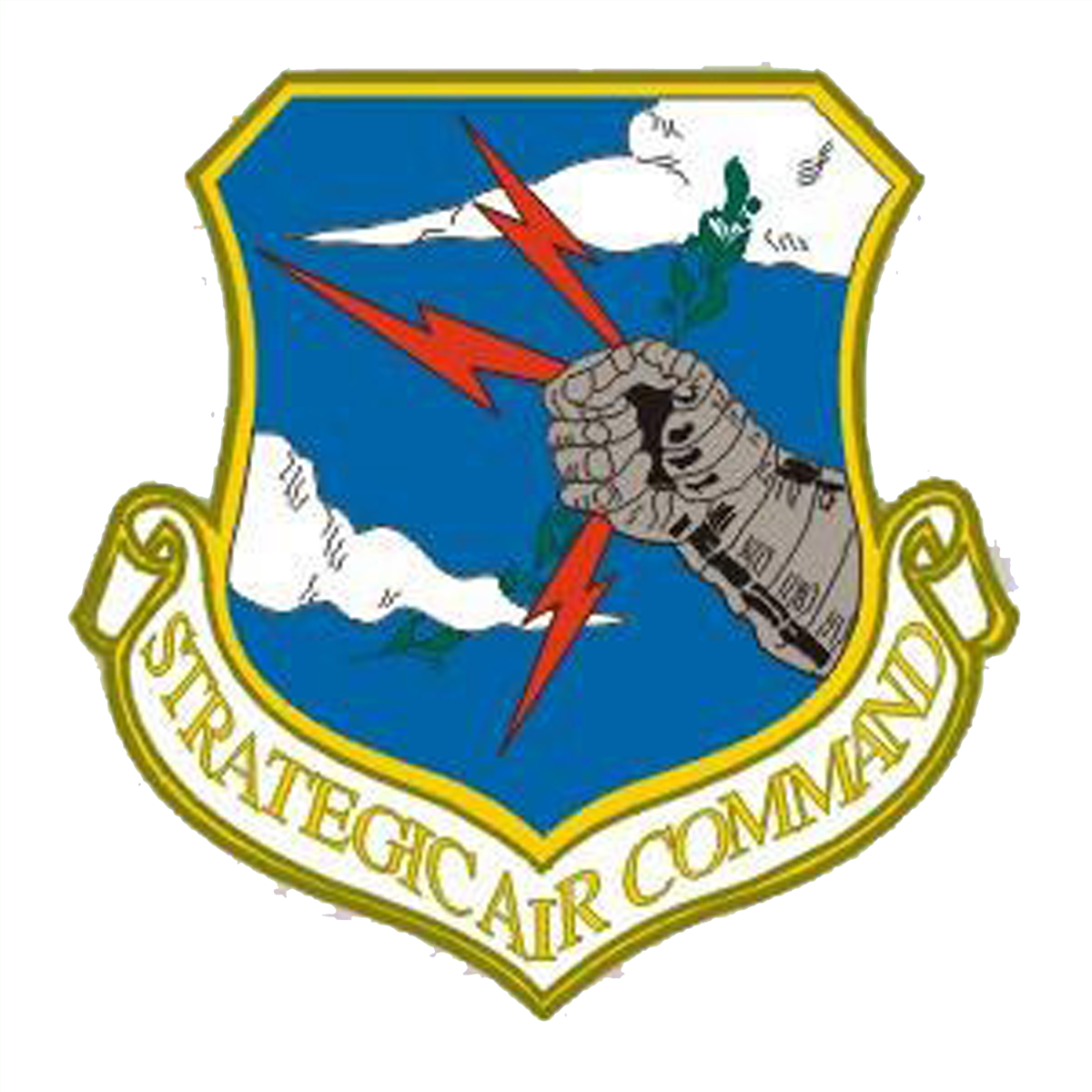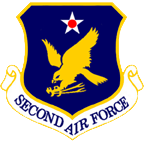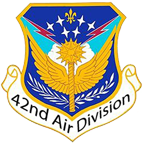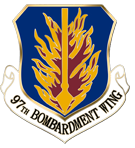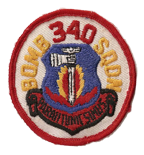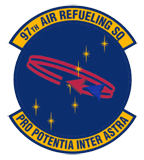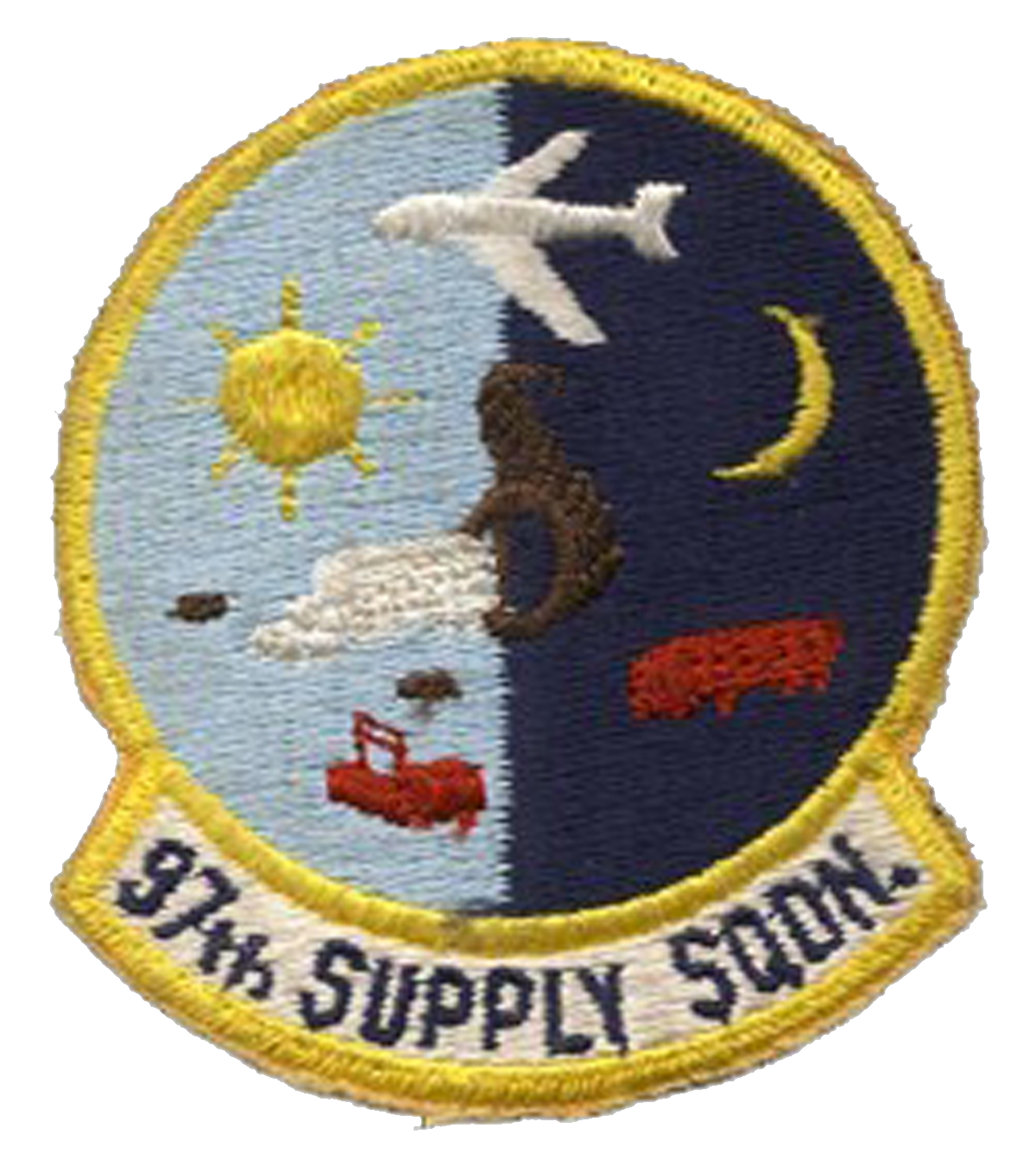|
Please join the effort to establish "The
National Cold War Museum" and the former Blytheville Air
Force Base by giving to the
Go Fund Me Page.
June 29 2019 the former base hosted its first Air Show to help raise awareness and revenue for The National Cold War Museum. I traveled to Blytheville and took many images at the Air Show. There was an effort to being a B-52 to the show but the current tensions with Iran prevented its appearance but all things start somewhere and this was a great beginning that hopefully will grow in the coming years expanding the economy and bringing new jobs to Northeast Arkansas which has experienced a slowdown since the closing of the base in 1992. You may view my images of the 2019 Air Show here. |
|||||||||||||||||||||||||||||||||||||||||||||||||||||||||||
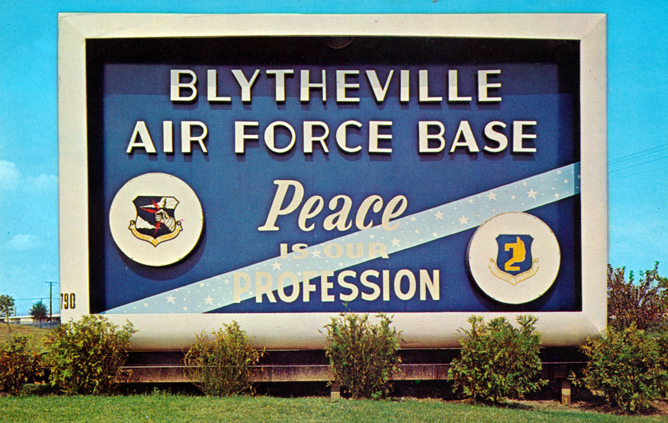 Staff Sergeant Rickie D O'Kelley Nov 10 1971 - Nov 9 1977 Nov 10 1971 - March 20 1972 inactive duty Delayed Enlistment Program Mar 21 1972 - Mar 20 1976 Active Duty Mar 21 1976 - Nov 9 1977 US Air Force Reserve inactive duty
|
Mostly remembered today as
the former
Eaker Air Force Base, Blytheville Air Force
Base was its name for most its operational life but
before that it existed during WWII as a
US Army Air Force Air Field two engine training base.
During WWII one of the planes used was a TB-25 which was the
training version of the B-25 Mitchell Bomber a plane I have
flown in, you can see a
video of
my B-25 flight on You Tube.
Eaker Air Force Base was deactivated and shutdown in 1992.
It was located in Northeast Arkansas just below the boot heal of
Missouri. When I drove my 1966 Mustang up to its gate for the first time
July
14 1972 it was
Blytheville Air Force Base and it was my first and only duty station during my
four year enlistment in the USAF. I arrived at its main
gate in 1972
and on my final day of duty I departed from the main gate January 30 1976
stopping for my last time at the Security Police Station that
set just outside the gate to signed out on terminal
leave and turn in my Air Force ID Card. For me the
renaming to
Eaker Air Force Base will never stick. I will
always remember it as Blytheville Air Force Base but Eaker was a
worthy name for an Air Force bomber base as General
Ira C Eaker became the commander December 1942 of what was
to become the famed 8th Air Force.
General Eaker flew in a B-17 on the first daylight heavy
bombing mission over Germany and almost 40 years after his
retirement by an act of congress he was promoted to a four star
general. General
Ira C Eaker was one of the men who helped defeat the Axis
Powers and secure our liberty and freedom.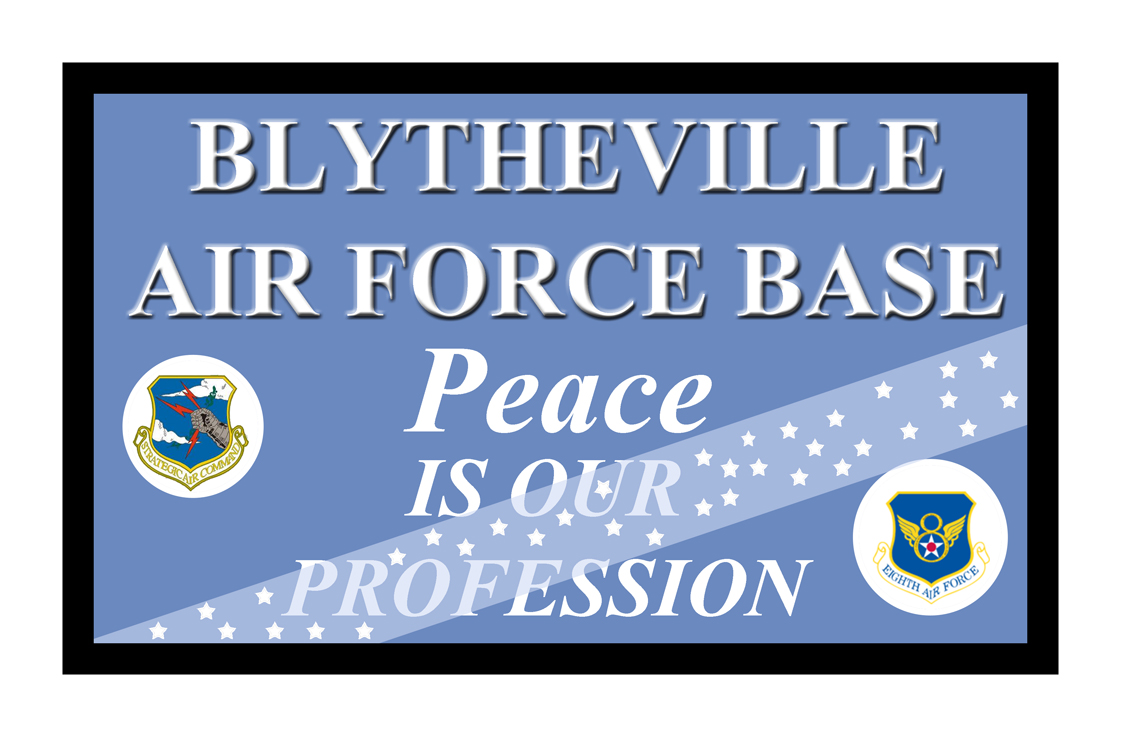 When I arrived Blytheville AFB the
97th Bomb Wing was assigned to the
42nd Air Division, which was assigned to the
2nd Air Force based at
Barksdale
AFB. The sign with the landscape is how it appeared in
those days but in 1975 it was reassigned to the
8th Air Force also based at
Barksdale
AFB and the sign was changed to reflect the 8th Air Force. When I arrived Blytheville AFB the
97th Bomb Wing was assigned to the
42nd Air Division, which was assigned to the
2nd Air Force based at
Barksdale
AFB. The sign with the landscape is how it appeared in
those days but in 1975 it was reassigned to the
8th Air Force also based at
Barksdale
AFB and the sign was changed to reflect the 8th Air Force. |
||||||||||||||||||||||||||||||||||||||||||||||||||||||||||
|
|||||||||||||||||||||||||||||||||||||||||||||||||||||||||||
|
|
|||||||||||||||||||||||||||||||||||||||||||||||||||||||||||
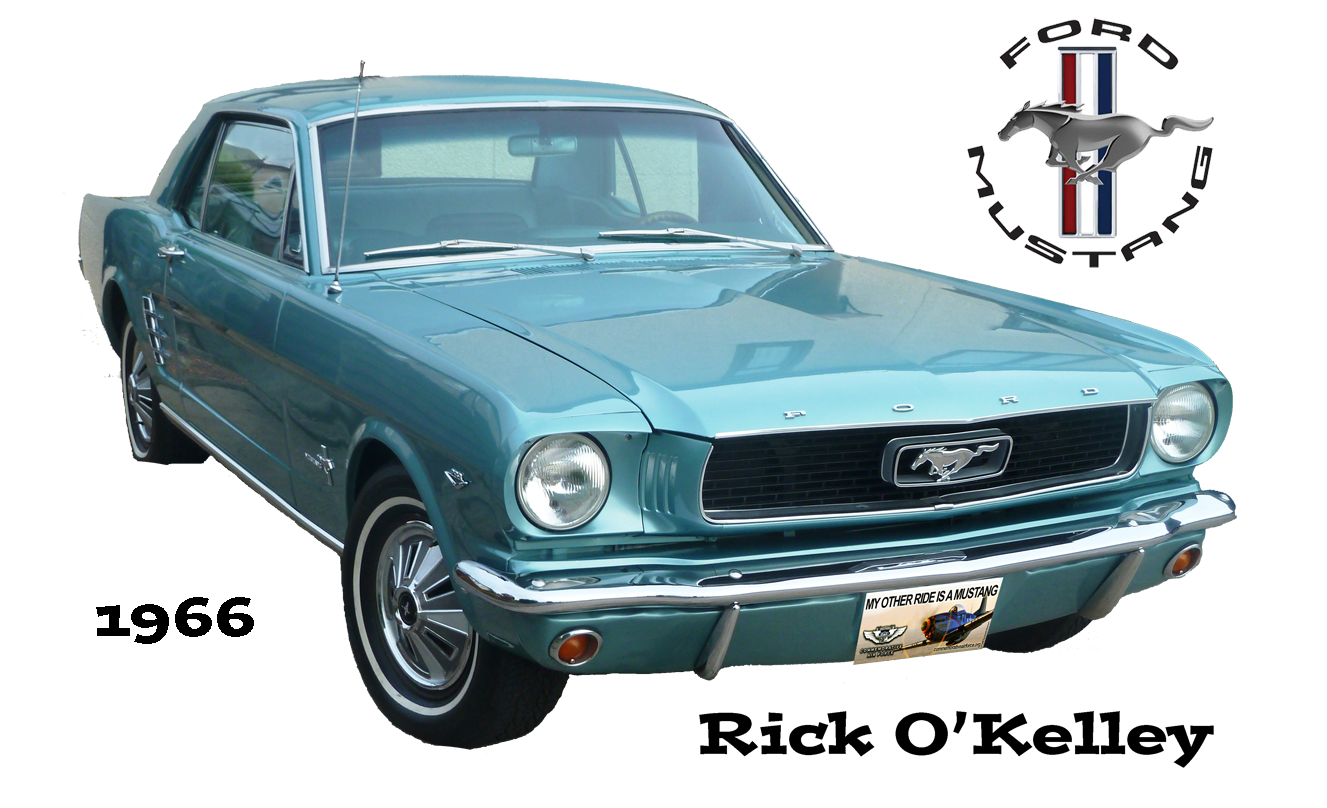 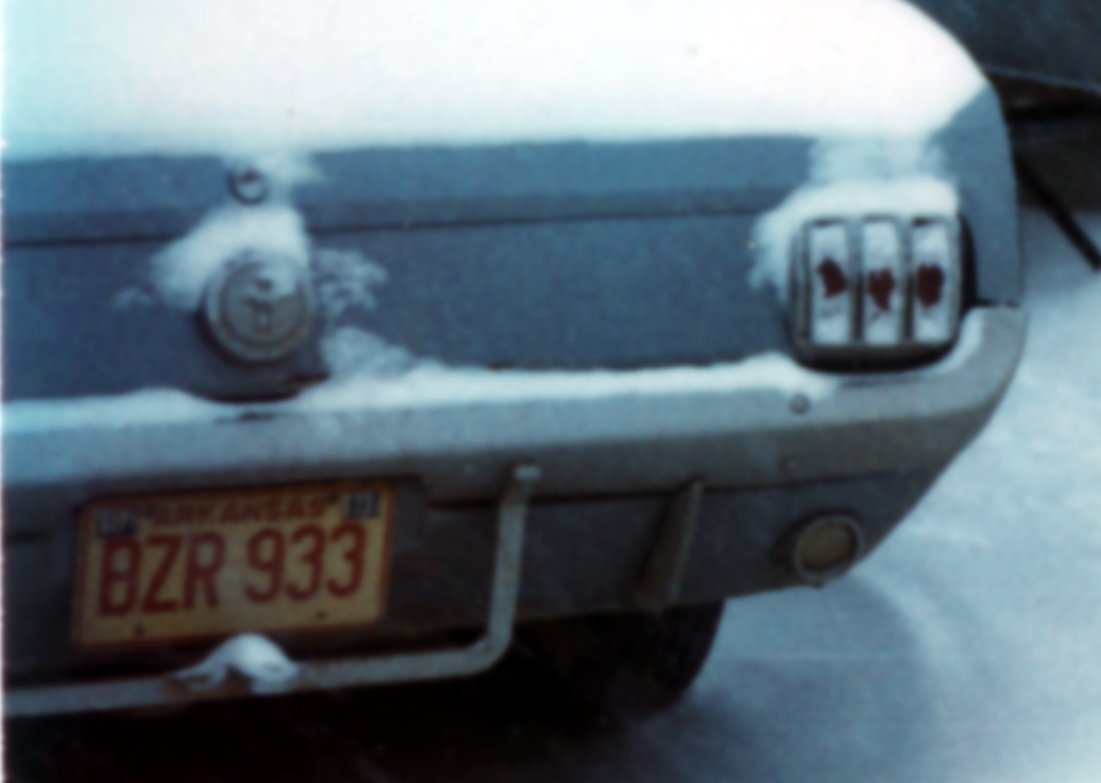 If
I seem a bit detailed, it is because I seek to record my experience before old
age or disease robs me of my memories and I put it in this
public place to aid my reconnection to long lost Air Force
buddies. I was a young man of barely 20 years old when I loaded
my 1966 Mustang with my meager worldly possessions, hitched my
1973 Suzuki in the front wheel carrier that my father had built
for me and we attached to the trailer hitch we installed on the
rear of my Mustang so I could tow my new motorcycle behind my
Mustang the 316 miles from my parent's home in Alma Arkansas to
my duty station at Blytheville Air Force base. The city of
Blytheville Arkansas is located in the far Northeast corner of
Arkansas along the Mississippi River and the boot heal of
Missouri and in 1972 it has a population of approximately
25,000. In comparision, the Northwest Arkansas city of
Fayetteville Arkansas had a population of about 5000 more than
Blytheville in 1970. The deactivation of the Eakers(Blytheville)
Air Force Base in 1992 hit the community hard as in
2019 the population is about 15,000 while the population of
Fayetteville exploded to near 90,000. If
I seem a bit detailed, it is because I seek to record my experience before old
age or disease robs me of my memories and I put it in this
public place to aid my reconnection to long lost Air Force
buddies. I was a young man of barely 20 years old when I loaded
my 1966 Mustang with my meager worldly possessions, hitched my
1973 Suzuki in the front wheel carrier that my father had built
for me and we attached to the trailer hitch we installed on the
rear of my Mustang so I could tow my new motorcycle behind my
Mustang the 316 miles from my parent's home in Alma Arkansas to
my duty station at Blytheville Air Force base. The city of
Blytheville Arkansas is located in the far Northeast corner of
Arkansas along the Mississippi River and the boot heal of
Missouri and in 1972 it has a population of approximately
25,000. In comparision, the Northwest Arkansas city of
Fayetteville Arkansas had a population of about 5000 more than
Blytheville in 1970. The deactivation of the Eakers(Blytheville)
Air Force Base in 1992 hit the community hard as in
2019 the population is about 15,000 while the population of
Fayetteville exploded to near 90,000. When I arrived in July 1972, Blytheville Air Force Base's B-52s, KC-135s, pilots, navigators, electronic warfare officers, tail gunners and many support personnel were overseas assigned to the 72nd Strategic Wing (Provisional) Anderson AFB Guam in support of Operation Linebacker. Before being assigned overseas Blytheville AFB was a fully functional Strategic Air Command or 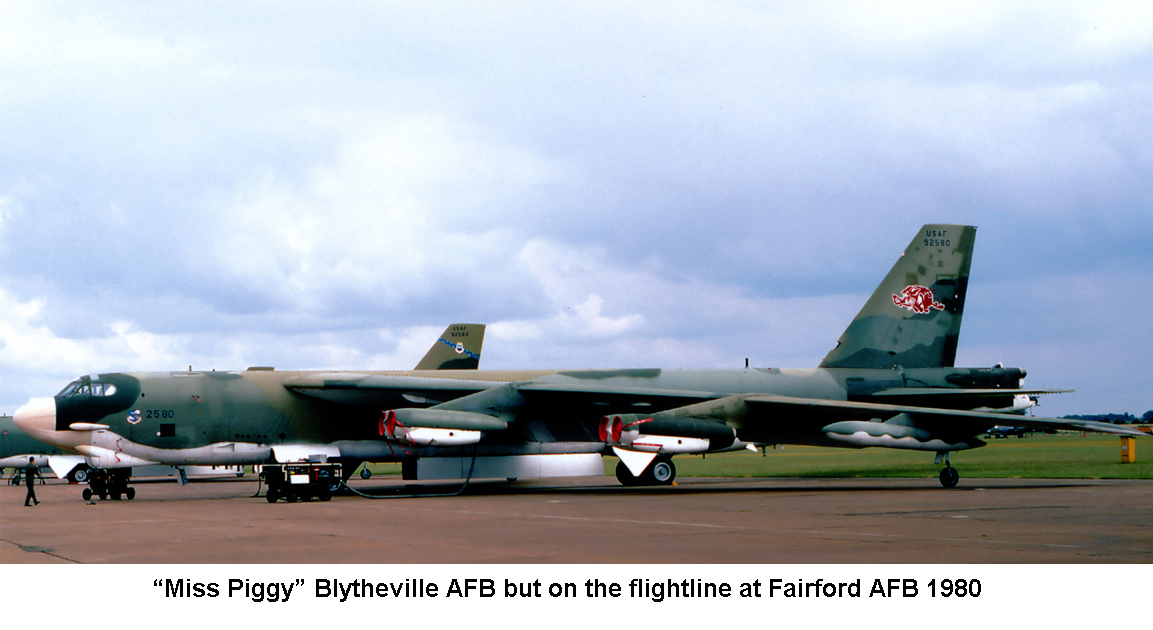 SAC base assigned
fifteen
B-52G Aircraft and "Hound Dog" nuclear weapons
where were basically guided missiles that mounted under the wings
of the B-52 and like all SAC bases Blytheville Air Force Base
kept six Hound God armed B-52s on a 24x7 alert mission to go to war
on a moments notice should America be attacked. Also
assigned were
twelve
KC-135 Tanker Aircraft to provide refueling support
and three fully loaded were also kept on alert. Our bombers and
tankers took their rotation in
Operation Chrome Dome. For those who think our jobs in SAC
wasn't important, they need watch the
STRATEGIC AIR COMMAND - THE GLOBAL SHIELD - 1980 USAF
DOCUMENTARY on YouTube. This was serious and deadly
business that "desk jockeys" & "ground pounders" such as Supply and Maintenance
were critical in the accomplishment of our mission to protect
and defend The United States because no plane got off the ground
without fuel, parts and maintenance.
SAC base assigned
fifteen
B-52G Aircraft and "Hound Dog" nuclear weapons
where were basically guided missiles that mounted under the wings
of the B-52 and like all SAC bases Blytheville Air Force Base
kept six Hound God armed B-52s on a 24x7 alert mission to go to war
on a moments notice should America be attacked. Also
assigned were
twelve
KC-135 Tanker Aircraft to provide refueling support
and three fully loaded were also kept on alert. Our bombers and
tankers took their rotation in
Operation Chrome Dome. For those who think our jobs in SAC
wasn't important, they need watch the
STRATEGIC AIR COMMAND - THE GLOBAL SHIELD - 1980 USAF
DOCUMENTARY on YouTube. This was serious and deadly
business that "desk jockeys" & "ground pounders" such as Supply and Maintenance
were critical in the accomplishment of our mission to protect
and defend The United States because no plane got off the ground
without fuel, parts and maintenance. I wasn't fully aware of what my future as part of SAC held for me as I headed out for my new life early that morning, I had nothing to guide me or aid in my expectations as to what was to come in my future. (The B-52G in the photo to the right was assigned to Blytheville AFB and it has the Red Razorback Hog on its tail section) Thanks to the Internet one can watch a 30 minute video of a real Eaker Air Force Base 1989 Operational Readiness Inspection which depicts what would happen if the B-52 bombers and KC-135 tankers on the alert pad were ordered to war. This was the way it was done in the 1970s when I was stationed at Blytheville AFB, ours was a serious life and death mission that could determine the future of our entire world and in 1972 I was a part of that. There are also brief moments in the video where one can see the Alert Facility where the pilots, air and ground crews lived during their duty time. It was very much like firemen living at their fire station on duty for the next fire alarm. It was July 14 1972 and my Mustang like most cars of that era had no air conditioning, we didn't know what it was like to drive down the interstate in a cool and quite car in those days, I did as most people did, rolled down my windows, turned the side vent glass so it would push the rushing outside hot air onto me, pushed a tape in my 8-Track player and set out on my new adventure. I probably listened to Neil Diamond, Credence Clearwater, maybe Jesus Superstar, Carol King's Tapestry or the Doobie Brothers as I cruised down the highway heading to my base and my future. It was late in the afternoon when I pulled up to the Security Police station that set just outside the main gate at Blytheville. I gave them my orders and asked where I was to go and they provided me instructions. I drove through the gates, stopping to show my military id card that had been issued to me in Basic Training. From the gate I drove down the main fairway which is "Memorial Drive" today and turned on Halifax Street arriving at the single airman's parking lot. I found a space where my motorcycle that was in tow would be out of the way. At the gate I was issued a sticker that had to be displayed on the fork of my motorcycle, I attached it and then went inside the barracks that the Security Police told me I was assigned to. The old WWII barracks had been broken into "apartments", it had a long hall down its middle from end to end with rooms on both sides much like modern hotels. In the middle was the place that the airman who managed the barracks worked and he had me sign in, gave me my sheets and blanket and escorted me to my room which was very close to the entrance. I don't remember the rooms having locks, there were great concerns about fire in these old wood structures so I think the room doors had no locks but inside the two man rooms we had closets that had locks to secure our uniforms and valuables. My roommate, Airman Donavan also newly assigned wasn't there so I took the unmade bed and I set about moving my possessions from my Mustang into the empty locker in our room. I then set out for my evening meal at the near by "chow hall". I think I recall six or eight of the old WWII Barracks and the "Chow Hall" set in the middle, three or four on one side and an equal number on the other side. My barracks was in the middle of the barracks that set on the northeast side of the "Chow" Hall. The WAF Barracks set between my barracks and the "Chow Hall". The "Chow" Hall is all that remains today, sometime in the 1980s the old WWII Barracks were torn down and replaced with modern brick apartments. The Air Force had the best "Chow" halls that I have ever experienced. They always had a wide selection to choose from and as a single airman, in 1972 the meals were maybe a quarter, they were very inexpensive and they were all you could eat. Most Air Force personnel were within their weight requirements, most Americans in 1972 were within their weight requirements, over eating and being fat wasn't a way of life in that time and eating out was considered a treat and there were no 24 hour fast food restaurants. That was a much different time than now. Our barracks had a TV room and a place to do our laundry. The sheets were the responsibility of the Air Force, we did our personal laundry and while the TV room picked up all the stations I don't recall spending any time in the TV room. My first night on base, I got in my Mustang and left the base and drove into Blytheville to explore returning when I got tired and going to bed. The next day I got up, took my shower, dressed in my summer uniform and followed the map given me by the Security Police to 97th Supply Squadron where I reported for my first day of duty. When I arrived at Blytheville AFB early July 1972, our American ground forces in Vietnam were being withdrawn and the Air Force had to cover the withdrawal of our US ground forces and provide increased support to the South Vietnamese military. The Blytheville Air Force Base B-52G Stratofortress bombers and KC-135 tankers were part of that support. This wasn't some overseas training mission, our crews served in Linebacker then in December 1972 they were part of the Linebacker II mission and some of our Blytheville B-52Gs and their air crews were shot down during the December 1972 raids over Hanoi. Some of our personnel were taken prisoners but some crew members were killed when SAMS hit their aircraft and I believe this has been forgotten because today their lonely and sad memorial dedicated to these crew members set in front of what use to be the Base Hospital at the now abandoned Eaker Air Force Base. (Note, at the time I wrote this in 2013 the memorial was falling into disrepair but new interest in restoration restored the memorial in 2017 and efforts to establish a National Cold War Museum in the old Alert building is on going.)
There are photos are fixed to the base of this memorial for Lt Col Keith R Heggen, Lt Col Donald L Rissi, Major Bobby A Kirby, Capt Randall J Craddock, Capt George B Lockhart, Capt Ronald D Perry, 1st LT Robert J Thomas, 1st Lt Charles E Darr, and Msgt Walter L Ferguson. This is a hell of a thing to be remembered for but Blytheville Air Force base is one of the few Strategic Air Command Wings to have lost both B-52s and airmen during combat and the base memorial is mostly abandoned by the US Government. I think it is lost on most Americans that the first time a B-52 was used in actual live combat was in Vietnam,the only time a B-52 was lost to enemy fire.
Fifteen B-52s were lost during the 1972 Linebacker II Christmas bombings and three of those B-52s originated from the 97th Bombardment Wing; B 52G 58-0201 "Charcoal 1" went down on the 18th, B 52G 58-0198 "Olive 1" and B 52G 58-0169 "Tan 3" were shot down on the 21st. Airmen from the 97th Bombardment Wing lost their lives and their photos appear on the lonely memorial at their abandoned base in Blytheville; Lt Col Keith R Heggen was in "Olive1", (now buried at Arlington Nat'l Cemetery) Lt Col Donald L Rissi, 1st LT Robert J Thomas and Msgt Walter L Ferguson were in "Charcoal 1" Major Bobby A Kirby, Capt Randall J Craddock, Capt George B Lockhart, Capt Ronald D Perry and 1st Lt Charles E Darr were in "Tan 3". These three 97th BW aircraft were stationed and flown out of Anderson AFB, Guam, as part of the 72nd Strategic Wing (Provisional). Some who have never served in the military might find it surprising that my highest ranking supervisor was a grandmotherly civilian, Mrs. Mabry, she asked that I call her "mama" Mabry as that was the name everyone called her. Mama Mabry was about the same age as my own maternal grandmother and looked a great deal like her. She was a very nice person but could go into a business command mode when needed. I never felt the leather side of her boot, she was always kind and polite to me but there were a few airman that she would get in their face and let them know that she was the boss. Al Cherepski was Mrs Mabry's civilian supervisor, no doubt they are all deceased today. My immediate military supervisor was SSgt Sell who was a good hearted man. Attached is the Personnel assignment to my duty station and my immediate supervisor. To be frank, from my first day of arrival at the 97th Supply Squadron it was no different than walking into a major company and going to work. It was very laid back, very friendly and everyone very helpful, encouraging, and often praising of my work. I fit into the Air Force like a fish in water. I had a clear chain of command, I knew the rules, and I learned every job and always tried to do them above and beyond.
When I arrived at Blytheville Air Force Base I was told not
to settle in too much because I would likely be sent for 6
months duty TDY to Guam in 30 days, most newly arrived airmen
were but the Air Force changed it policies just a few weeks
after my arrival mostly I suspect because Vietnam was expected
to be over sometime in the next year, the Air Force stopped
sending new 3 level airmen such as I and started sending 5 level
sergeants and second enlistment personnel who hadn't yet served
overseas. I took to the Air Force life so well that with
only four weeks experience working in supply Staff Sgt Fike the
97th Supply Liaison Officer to Base Procurement lost his aid to
a base deployment and I assigned and I must have done it well
because about 90 days later when Staff Sgt Fike received his
orders to go overseas I was left to do both our duties.
Base Procurement was located a considerable distance from
Supply. It was located at the main gate so vendors would
have easy access but Supply was near the flight line so I had
been in the Air Force barely six months and I was working
unsupervised. Base Procurement was its own group, mostly
it was all civilian workers whose job was to let the bids and do
the contracts for the supplies that the Air Force authorized the
base to purchase directly from local vendors. Ninety-five
percent of everything stocked in our Supply warehouse came from
five USAF military depots but light bulbs, film, and some other
items were bought locally probably mostly to keep the local
community employed and my job as the Supply/Procurement Liaison
Officer was to resolve the many problems that came with making
these two systems work within Air Force Regulations. It wasn't
difficult for me, it was an easy task yet the Air Force
determined that it was a job for a Staff Sergeant
I worked several months without an aid in SSgt Fike's position but was later assigned an Airman as my aid. This added responsibility and my performance are mentioned in my nomination for P-R-I-D-E AIRMAN for the month of January 1973, I was promotion to Airman First Class February 1 1973.
In Feb 1973 I was transferred from Procurement to NORS Control or Not Operational Ready Supply which was a unit within 97th Supply Squadron responsible for the providing the parts needed to keep the alert aircraft operational 24x7. I was green, I had no clue that "ground pounders" duties would help win the Cold War. The pilots and planes were a major part of our war effort but without the many "ground pounders" like myself, those pilots and planes never got off the ground to accomplish the mission. When most veterans learn I was in the 97th Supply Squadron, they often respond with, "you had it easy, you were a "8 to 5" office worker who was off on weekends". But NORS was a 24x7 always at War Readiness, because our entire mission was about keeping the bombers, tankers, and missiles setting on our Alert Pad supplied so they could take off in 15 minutes or less and go to war, we were like a cocked gun, every request that came into our office was handled as if we were already at war. When the ORIs came, nothing changed for us, we were already working at ORI status each and everyday. After I was trained, I worked a 16 hour shift on Thursday night from 1600 hrs to 0800 hrs on Friday and a 24 hour shift that began at 8AM on Saturday and ended at 8AM on Sunday and our work was reported daily and directly to the Wing Commanders office, to the Numbered Air Force and to SAC so it really was a big deal. NORS Control
wasn't about supplying the base with toilet paper and
ink pens, our mission was to support the
97th Bomb Wing Alert Aircraft
that were setting on a war footing on our
Alert Pad. Our sole duty was to provide the mission
critical parts that kept our planes on Nuclear Alert
operational. We were the "Federal Express" the "Domino's
Pizza" because when a
B-52G, an
AGM-28 Nuclear Hound Dog Missile or
KC 135 Tanker setting on our alert pad became "Not
Operationally Ready Supply" for their nuclear mission
because of a failed part, we set in motion the process to have
the part issued without delay insuring it arrived in the hands
of maintenance quickly, often in minutes. we didn't remove
the part from
Special
Order A-1155 August 1 1975 made my date of rank
or DOR May 1 1975 or exactly one year after my
promotion to Sergeant E4. While I waited for the day I
could sew on my Staff Sergeant chevrons plans were made for my
transition from NORS Control to head my own section, DIFM
Control where I would begin by supervising a Sergeant with 6
years more experience in the Air Force than I, and an Airman
First Class and an Airman. For the first time since
working as the Liaison for Base Procurement I would be working a
normal 8 to 5 Monday through Friday work shift. My
promotion to Staff Sergeant really was a big deal, my NORS
Control Supervisor was a Technical Sergeant, he was only one
rank above me and I was on the fast track to Technical Sergeant.
Maybe it didn't seem like a big deal because by that time, most
people around me just expected it. I was living by myself in
Blytheville so there was no celebration relating to my Staff
Sergeant promotion but it was a very big deal. The
Air Force had nine enlistment ranks and in 37 months and 9 days
of active service I had earned five of them, I had earned more
than half of them, today the average time to obtain
Staff Sergeant is 6.9 years so my promotion to Staff
Sergeant so quickly was a rare accomplishment and I remember to
this day how I felt when I wore my uniform for the very first
time with my Staff Sergeant rank on its sleeve, I felt that I
had arrived and was truly somebody in my nation's US Air Force.
My US Air Force ID Card number was 8608227. I do not
have a copy of that card. We had a Univac 1050-II computer that occupied a room about 75 feet by 75 feet and the computer didn't have 1% of the computing power of the cell phone in my pocket but is was the top of the line computer of its time but there was no Internet or global network in those days, everything had to be done manually when it was outside the reach of our computer so we had a bank of six phones and lines that allowed us to call anywhere in the world, 24x7. This was a big deal in 1973, people didn't just pickup a phone and direct dial anywhere in the world without the aid of an operator, one couldn't direct dial to most places in the state of Arkansas in 1973 but we had that ability, we had our own special phone book with all the direct phone numbers to all the Strategic Air Command bases through out the world. NORS was a lot like police work, a lot of boredom intermixed with times of great pressure to get things done and done right in a very limited amount of time. During the day, there were sometimes as many as three to four controllers on duty in NORS, one was a civilian worker but after hours and on weekends there was only one person on duty and while my position was suppose to be manned by a SGT or Staff SGT, I was an Air First Class and was filling the position. I was one of those who worked after hours so I listened to a lot of music, watched TV until the station went off the air and sometimes when bored, I would call Guam, Japan, Korea, or England and Air Force personnel working in NORS Control at other SAC bases would call me just to have something to do. Just as kids today do text messaging late at night when they are suppose to be asleep we visited over the phones as we had the rare "unlimited" plan, we could talk as much as we wanted and for as long as we wanted to anyone in any NORS office in the world. Sometimes romances would occur between the females working in far away bases and because the Air Force allowed us to fly "space available" on the aircraft flying between bases, Air Force personnel would fly to other bases for the weekend or when ever they were off. This was risky as one sometimes had to take a commercial flight back but one of the female Sergeants that worked at one of the northern SAC bases flew to Blytheville often to date one of the single Sergeants that worked in NORS Control and they got married so the work I did wasn't always boring, there were a lot of "global" happenings going on. I worked a 24 hour shift on Saturday and a 17 hour shift on Thursday night and I would set up very late into the night making phone calls trying to locate parts. The rest of the week I was off, so I rarely took any leave time, didn't need to I was off a lot and I received many 3 day passes which didn't count as leave. NORS Control was the sole supply office open after hours so we sometimes also issued parts after hours for B-52Gs and KC-135s that were not on alert but were being repaired so NORS was considered the elite of 97th Supply Squadron, top performers were assigned to NORS Control, most were promoted to E5 rank more quickly. We had to wear a lot of hats and do the duties of several sub departments within Supply, we had to know more about the jobs others did and we had "Secret" clearance because some of the parts that were kept behind lock and key had "Secret" classifications. If a plane couldn't fly because of a part, the mission could not be completed so everyone on base had a role to play in our nation's defense, from the cook to the pilot, everyone was important to the mission and that included ever man and woman who worked in NORS Control. People tend to think only the pilots are heroes and don't let me mislead you, they are critical to the mission but think of this as your car. You might be the best driver in the world but if your prize car is broke down then it doesn't matter how talented of a driver you are, you aren't going anywhere until that parts guy delivers the parts and the maintenance guy installs those parts to put your ride back in operating condition so everyone in the USAF plays an important part in US Air Force mission. Being a pilot might sounds like a "glamour" job but those missions were long, hard, often uncomfortable and dangerous while my job in NORS Control might have been the best job in the US Air Force as I worked in a heated and air conditioned office, I was exempt from inspections and formations, rarely saw an officer, got to sleep on the job, watch TV, listen to the radio, read and I worked mostly alone. My mission had nothing to do with the Vietnam War and everything to do with the "Cold War" nuclear mission. A loss in Vietnam didn't mean the end of our way of life but if we lost the "Cold War", everything was going to change for every person living in America and the world so winning the "Cold War" was everything, it was our future, my family's future, all our family's futures were on the line something few people get the magnitude and importance. The "Cold War" was a much bigger deal that most understand and being in SAC, everyday was like the day the war would start, we had to be ready for war as if we were already firing bullets at the USSR. Unlike the US Army, US Marines, most of the US Navy and the other commands of the Air Force, those of us assigned to SAC were always on a "War Footing", we were always only 15 minutes away from going nuclear and in October 25 1973 during Yom Kippur SAC was ordered to DEFCON 3 and we were all recalled to duty stations on base, President Richard Nixon almost order SAC to war and this is when I became aware of the seriousness of my Air Force Duties. They call to alert came in the early morning of October 25 1973, my wife and I lived off base and we were sound asleep when the phone woke us. Our neighbor was a master sergeant with 5 children and as he headed to base his wife packed their station wagon and left town with their children. My wife stayed while I went to work. I was 21 and had been in the Air Force 18 months and didn't really know what to expect but those older and more senior than I were somber, the officers had serious faces and huddled in quite conversations. They were worried. Supply personnel went on a 12 hour shifts to stay open 24 hours. Since NORS Control was already on a 24 hour schedule, we worked everyday as if we were at war, I was sent home to resume my normal work schedule. The alerts lasted almost 24 hours then it was over. A month later my wife and I went home to have Thanksgiving with my parents and brothers and I mentioned that we almost went to nuclear war, there was a very brief discussing and the topic went to other routine conversations. Clearly this event never really registered with most people, it was just business as usually but that day most humans in our world came close to death. It would be 5 decades later that the true cause of that event would be declassified. The alert occurred because CIA reported that the USSR was transporting nuclear weapons via ship to Egypt and America threatened to go to war if those weapons were delivered. We gave Israel nukes, this was documented in the fictional movie "Sum of All Fears" but our American leadership believed that was okay but it wasn't okay if the USSR gave Egypt nukes and that disagreement almost killed us all. There were about 75 million Jews living in our world in 1973 and only about 5 million Jews were living in Israel at the time and it is incomprehensible to me that our American leadership was willing to kill most humans on this earth to protect 5 million Jews desire to live in the middle east. More than 45 years has pass and this still baffles me. The B-52 was manufactured in an A through H model. One can
easily identify the older A through the F models by their taller
vertical stabilizer or tail that terminates in a narrow top
line. The B52G and B52H have the shorter tail which
terminates in a longer running top line and the G and H appear
identical except for their engines. The B52H has what
appears to be a cone attached to the front intake of their
engines. At the time I served the D, F, G, and H were the
only bombers that were assigned or visited our base. By
the beginning of the 1990s only the G and H models were still
flying but the Gs were all grounded and cut up as a condition of
the START treaties with the USSR. Today, of the 744 B-52s
manufactured only about 75 of the B-52H remain in service and
they remain in service because no other aircraft has been build
that can replace them.
The last B-52H rolled off the Boeing Wichita Kansas assemble
line June 22 1962.
Blytheville Air Force Base was the smallest Strategic Air Command B-52 Air Force base; we had the 340th Bomb Squadron with fifteen B-52G bombers and I think twelve KC-135 tankers assigned but our planes, their crews, and many of our senior support personnel had all been sent to Anderson AFB Guam in the summer of 1972 to support the Operation Linebacker mission; we had no B-52Gs setting with nukes on our alert pad the summer when I arrived but we did have a few B-52D and B-52Fs being repaired due to the huge workload on the regular repair  depots. Because of the
deployments there was a desire to keep moral high for the
families separated from their Airman by these war time
deployments into the Vietnam War theater so the base held an
open house and the depots. Because of the
deployments there was a desire to keep moral high for the
families separated from their Airman by these war time
deployments into the Vietnam War theater so the base held an
open house and the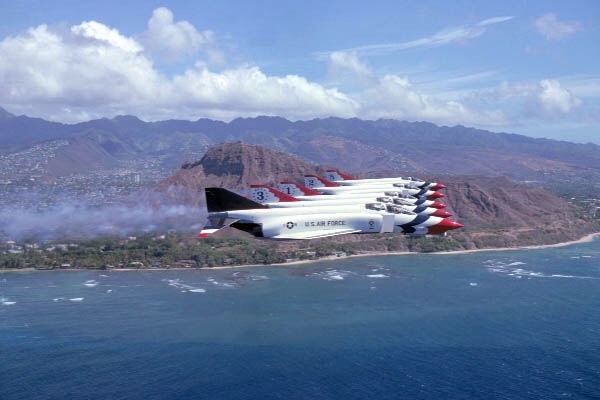 US
Air Force Thunderbirds and the
US
Army Golden Knights came to Blytheville Air Force base
to
perform. The following notice appeared in the
October 24 1972 Blytheville Courier newspaper "The
Thunderbirds will be among featured attractions at
tomorrow's o p e n house at Blytheville Air Force Base. Also
appearing will be the U. S. Army's Golden Knights precision
parachute team. Open to all citizens, the event will begin
with gates opening at 12:15 p.m. and continue until 4:30
p.m. Here the Thunderbirds fly the "Missing Man" formation,
a formation commemorating the American prisoners of war and
missing in action in Southeast Asia. "
(A photo of the Thunderbirds missing man is displayed in the
newspaper). In the photo to the right, Diamond Head appears
in the background. The photo to the left was taken March 15
2016 at
South Park Monet Mo. US
Air Force Thunderbirds and the
US
Army Golden Knights came to Blytheville Air Force base
to
perform. The following notice appeared in the
October 24 1972 Blytheville Courier newspaper "The
Thunderbirds will be among featured attractions at
tomorrow's o p e n house at Blytheville Air Force Base. Also
appearing will be the U. S. Army's Golden Knights precision
parachute team. Open to all citizens, the event will begin
with gates opening at 12:15 p.m. and continue until 4:30
p.m. Here the Thunderbirds fly the "Missing Man" formation,
a formation commemorating the American prisoners of war and
missing in action in Southeast Asia. "
(A photo of the Thunderbirds missing man is displayed in the
newspaper). In the photo to the right, Diamond Head appears
in the background. The photo to the left was taken March 15
2016 at
South Park Monet Mo.Note - I am wearing a Pararescue Hat and T-Shirt in the above photo. No I wasn't Pararescue, I bought these from https://www.pararescue.com and wear them to show my support for Pararescue just as one might wear their favorite sports team and I wear them because I had been in Basic Training only 5 days when me and two other Airmen were selected from our 45 man training flight we were shown several movies and asked to try to become Pararescue, that was how it was done in 1972, the Air Force selected us. I turned the opportunity down because I had promised my mother and Renee' that I wouldn't volunteer for anything dangerous. There must be millions of US Air Force Thunderbird stories each one just as unique and just as special as my own memories from four decades ago. The USAF celebrated it's 25th birthday September 18 1972 and exactly 1 month after Renee' and I married we were setting in the bleachers that had been setup along the Blytheville Air Force Base flight line and witnessed something I had never seen before in my young life, something that was much larger than I was. One can study about America in a classroom, they can see it in a movie or on TV but this was different, I were seeing the awesome might and ability of America with our own eyes, hearing it with our own ears and feeling it in the vibrations going through our bodies as those powerful US Air Force F-4E Phantom II Thunderbirds roared by and I were witnessing this demonstration as members of the US Air Force family. We weren't just spectators who came to see an air show that October 25 1972; We were part of the "US Air Force family". We had US Air Force photo identification cards in our wallets, mine as an active duty Airman, hers as an Air Force Dependent and I wore a US Air Force uniform in my duties and the United States Air Force F-4E Phantom II Thunderbirds were at Blytheville Air Force base because we were all part of the same "Air Force family", they weren't there for them, they were there for us. I was twenty years old and the US Air Force Thunderbirds would become 20 years old before my 21st birthday. This was a very big deal because not before or since had I been a part of something so large, so powerful, and so unique. Watching the USAF Thunderbirds that day was like watching the home team win the National Championship. 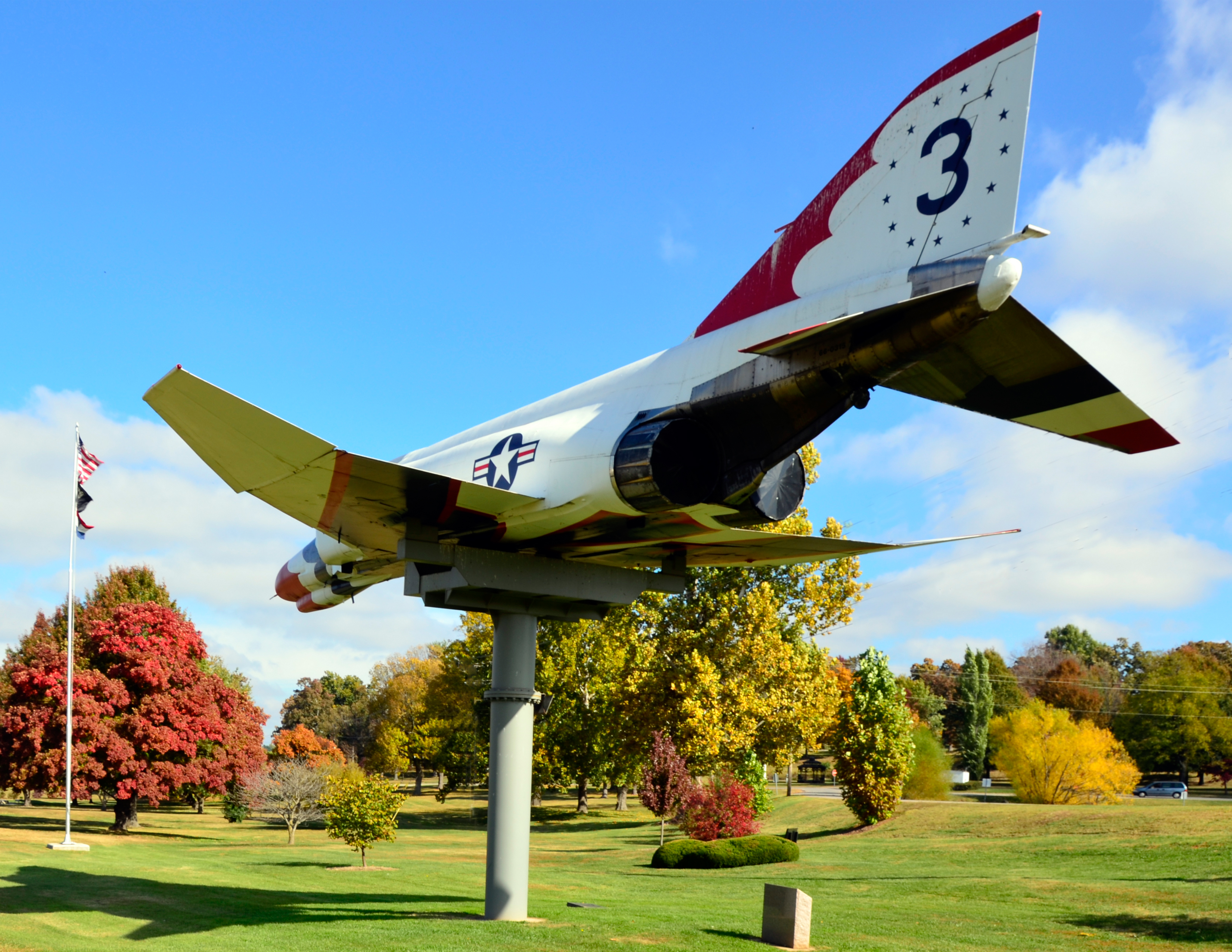 I
didn't own a camera at the time so I don't find I have any
photos of the October 25 1972 Blytheville Air Force Base air
show but about 75 miles from our current home is found in a
city park in
Monett
Missouri displayed atop a stick as if performing one of
it's powerful roaring flybys that it did that October 1972
is
F-4E Phantom II Thunderbird #3. I had forgotten this
Thunderbird was on display in
Monett
Missouri until I came upon
Gary Younglove's book "Phantom
Memories - In Search Of Thunderbird F4Es". Buried
within the fog of time I had forgotten the events of Oct 25
1972 until Gary's book triggered my memories of that care
free time in the beginning of our adventures as a newly
married couple. I saw this jet flown by USAF
Captain Rip Blaisedell in the
right wing position as one of four Thunderbirds in the
Thunderbird diamond formation. I
didn't own a camera at the time so I don't find I have any
photos of the October 25 1972 Blytheville Air Force Base air
show but about 75 miles from our current home is found in a
city park in
Monett
Missouri displayed atop a stick as if performing one of
it's powerful roaring flybys that it did that October 1972
is
F-4E Phantom II Thunderbird #3. I had forgotten this
Thunderbird was on display in
Monett
Missouri until I came upon
Gary Younglove's book "Phantom
Memories - In Search Of Thunderbird F4Es". Buried
within the fog of time I had forgotten the events of Oct 25
1972 until Gary's book triggered my memories of that care
free time in the beginning of our adventures as a newly
married couple. I saw this jet flown by USAF
Captain Rip Blaisedell in the
right wing position as one of four Thunderbirds in the
Thunderbird diamond formation.
According to Air Force records, 2014 was the 20th year anniversary for Thunderbird #3's home in Monett; it is a wonderful addition to the park, its placement and manner of display is perfect, there is a Kiwanis Club 1995 stone marker dedicated to all who have served, and it is fitting that a memorial bench for US Army Spc Christopher G Stark killed in Afghanistan February 28 2011 sets not far from the base of this Thunderbird because when I saw this Thunderbird fly Oct 25 1972 it flew in the Missing Man Formation to honor those killed, missing, and held prisoner in Southeast Asia. You may see all my Thunderbird #3 Monett Missouri photos at this link.
There are two F-4E Phantom II Jets setting on poles at the Burke Lakefront Airport in Cleveland, Ohio one is USAF Thunderbird #1 66-0284 and the other USN Blue Angels #1. Thunderbird #3 history's is as follows: 66-0315 was last used as an NF-4E by the 6512th Test Squadron, 6510th Test Wing at Edwards AFB. It arrived at AMARC (Davis-Monthan AFB) on 08/29/1991 and was assigned inventory number FP 744. 66-0315 was processed out of AMARC on 08/01/1994 for display in Monett, MO. I don't yet know the complete story how this Thunderbird came to be in Monett but according to WayMarking.com it was a group community effort headed by the Monett Kiwanis Club and Mr Dayton Mackey was the project chairman. I recall on a motorcycle trip in the 1990s on my 1988 Honda Goldwing seeing the Thunderbird as it sets beside the highway when one comes into Monett from the south on Missouri Highway 37. It is an unexpected thrill to come over the hill and see that jet setting close to the road. The F-4E Phantom II began a new page for the USAF Thunderbirds. Before the F-4E Phantom II or before 1969 all the jets flown by the Thunderbirds had only the Thunderbird red, white, and blue markings but because of the use of different metals in the making of the F-4E Phantom II outer skin this became the first Thunderbird to sport the new all white paint job. The US Navy Blue Angels painted their F-4E Phantom II jets blue. In the book "We Rode The Thunder - The Autobiography of the United States Air Force Thunderbirds", the writer notes that the F-4E didn't have the "artistic elegance of the T-38 or the agility of the F-16" but the F-4 is described as "hair-on-chest brutality" and compared it liken the B-52, it was not a machine called "she". I think this description is accurate as I believe the F-4 was one of the ugliest fighter jets ever flown, it has a "mean" look which is likely why it was so popular with pilots. Since the F-4E Phantom II all USAF Thunderbird jets have been painted white and bear the Thunderbird markings and the F-4E Phantom II was also the most powerful and loudest fighter every flown by the US Air Force Thunderbirds. The F-4E Phantom II was the only jet flown by both USAF Thunderbirds and the US Navy Blue Angels. Because of the Oil Crisis that began in October 1973 the F-4E Phantom IIs Thunderbirds were retired and replaced by the smaller and lighter T-38 Talon in February of 1974. This changed the Thunderbird tradition of flying the same fighter that the rest of the USAF flew as the F4 continued to be used by the USAF and USN in combat. Rick O'Kelley |
|||||||||||||||||||||||||||||||||||||||||||||||||||||||||||

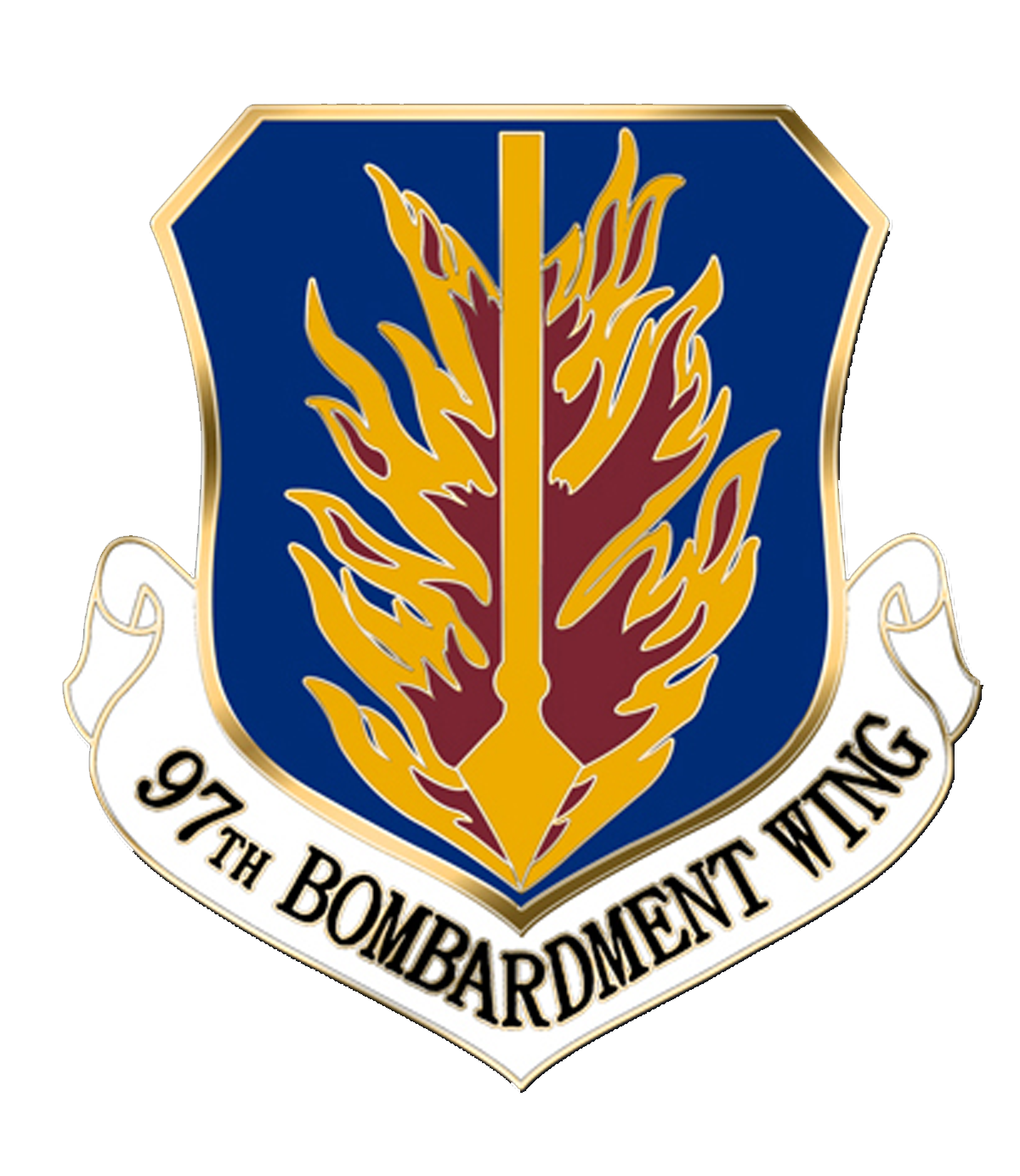
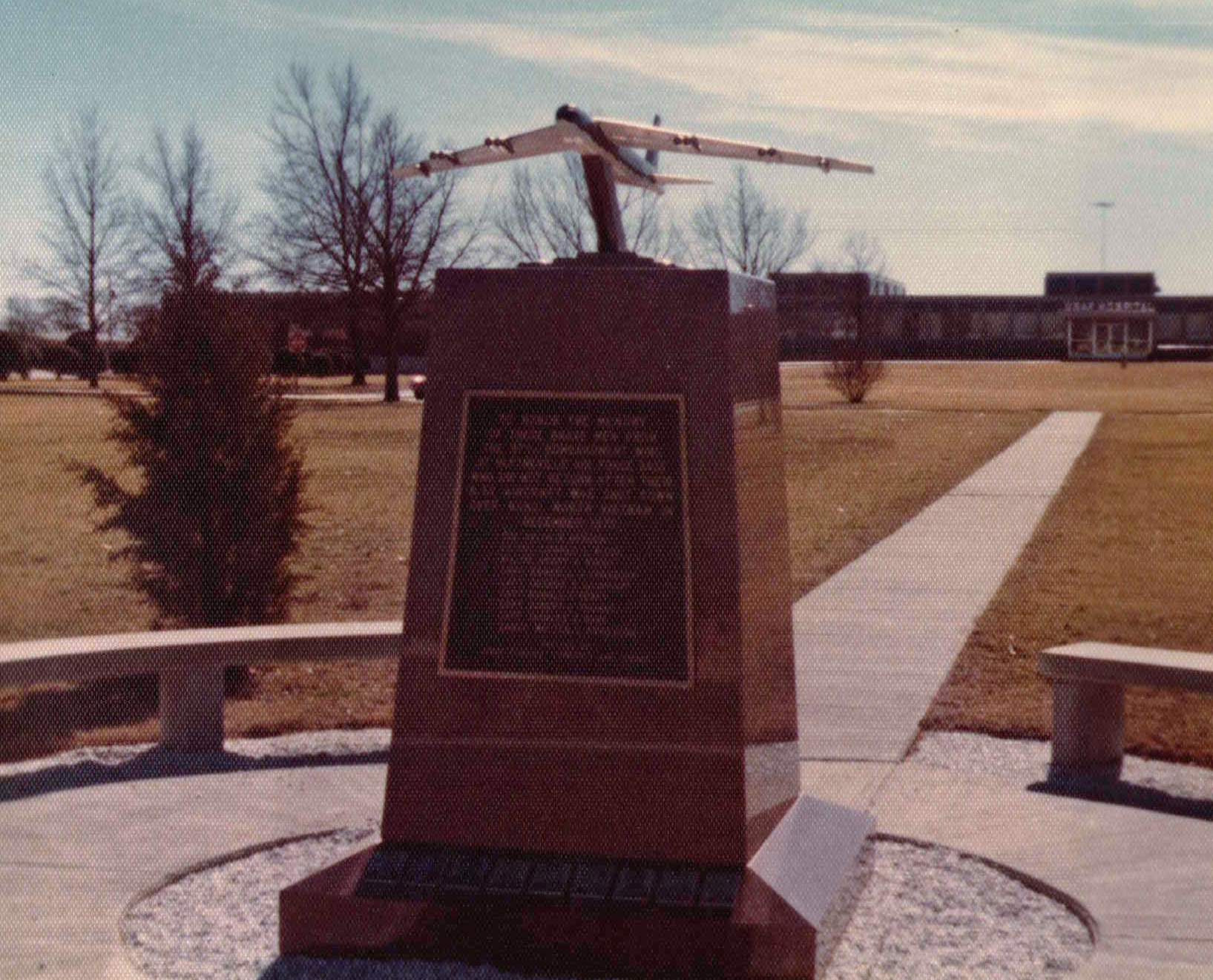
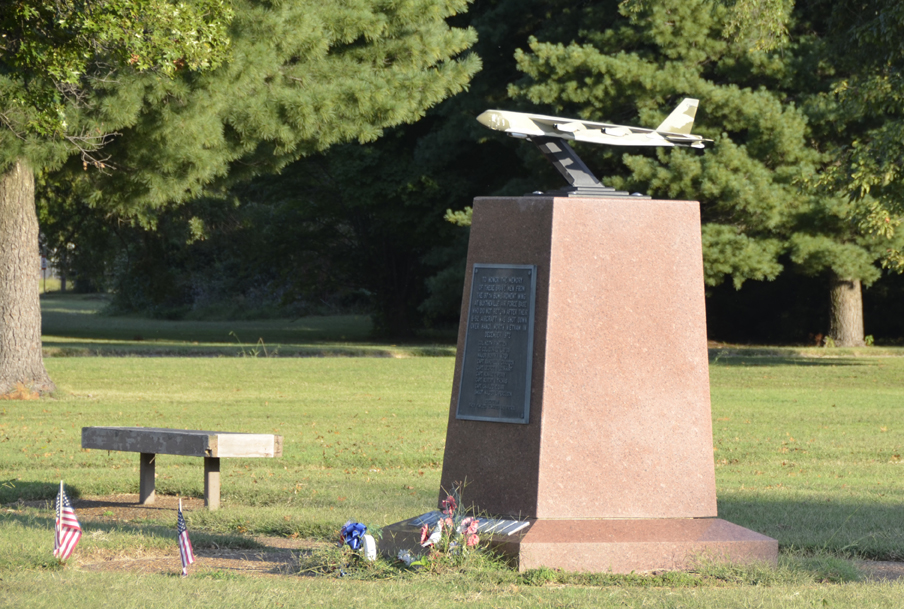 To the
left is how the Base Memorial looked in the winter of 1976 my
last day at Blytheville, the long sidewalk leads towards the
Base Hospital which in 1976 was a hub of activity. To the
right is how the memorial appeared in September of 2013.
To the
left is how the Base Memorial looked in the winter of 1976 my
last day at Blytheville, the long sidewalk leads towards the
Base Hospital which in 1976 was a hub of activity. To the
right is how the memorial appeared in September of 2013. 